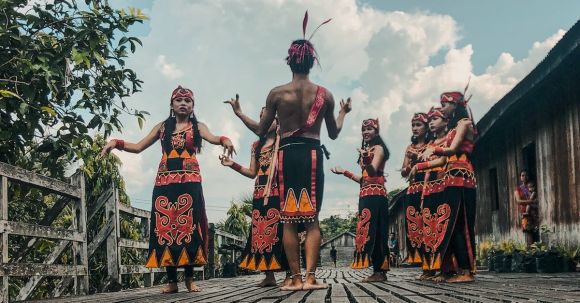Dance is a universal language that has been a part of human culture for thousands of years. It is a form of expression that transcends words and communicates emotions and stories through movement. While dance may vary in style and technique across different cultures, its significance remains constant. Let’s take a closer look at the evolution of dance in various cultures around the world.
Ancient Egypt: The Birth of Dance
One of the earliest recorded instances of dance can be traced back to ancient Egypt. In this civilization, dance held a sacred and ritualistic purpose. It was performed during religious ceremonies and festivals as a way to honor the gods and communicate with the divine. These dances often involved complex movements and intricate costumes, representing the rich symbolism and mythology of the Egyptian culture.
India: The Art of Storytelling through Dance
In India, dance is deeply rooted in tradition and mythology. Classical Indian dance forms, such as Bharatanatyam and Kathak, have evolved over centuries and are still practiced today. These dances tell stories from Hindu mythology, with each movement and gesture carefully choreographed to convey specific emotions and narratives. Indian dance also incorporates elaborate costumes, intricate footwork, and expressive facial expressions to captivate the audience.
Japan: The Grace and Precision of Traditional Dance
Japanese dance, known as Nihon Buyo, is a traditional art form that combines elements of theater and movement. It originated in the Edo period and evolved from folk dances performed at festivals. Nihon Buyo emphasizes grace, precision, and attention to detail. Dancers often wear beautiful kimonos and use fans or props to enhance their performances. Each movement in Japanese dance is deliberate, with the goal of conveying a particular mood or story.
Africa: The Rhythm and Spirit of Dance
Africa is a continent rich in diverse cultures, each with its unique dance traditions. Dance is an integral part of African societies, used for various purposes, including celebrations, rituals, and communication. African dances are characterized by energetic movements, rhythmic beats, and vibrant costumes. They often involve group participation, with everyone coming together to create a lively and communal experience.
Latin America: The Passion and Flair of Dance
Latin American dance is known for its passion, sensuality, and infectious rhythms. Salsa, tango, and samba are just a few examples of the vibrant dance styles that originated in this region. These dances are a fusion of indigenous, African, and European influences, creating a dynamic and captivating art form. Latin American dances are characterized by quick footwork, intricate partner work, and expressive body movements that reflect the fiery spirit of the culture.
Modern Dance: Breaking Boundaries and Embracing Individuality
In the 20th century, modern dance emerged as a rebellion against the strict rules of classical ballet. It sought to explore new movements, challenge traditional norms, and embrace individuality. Pioneers like Martha Graham, Isadora Duncan, and Merce Cunningham paved the way for a more expressive and experimental form of dance. Modern dance is characterized by fluidity, improvisation, and a focus on the dancer’s personal interpretation and expression.
The Evolution Continues
Dance continues to evolve and adapt with the changing times and influences of different cultures. Today, we see the rise of contemporary dance, which combines elements of various dance styles and encourages creative exploration. Additionally, street dance styles, such as hip-hop and breakdancing, have gained worldwide popularity, showcasing the fusion of urban culture and movement.
In conclusion, dance is a powerful and dynamic art form that has evolved differently in various cultures throughout history. From ancient rituals to modern expressions of individuality, dance continues to captivate audiences and serve as a means of communication, storytelling, and celebration. As we move forward, it is essential to embrace the diversity and richness of dance, appreciating its ability to bring people together and transcend cultural boundaries.
